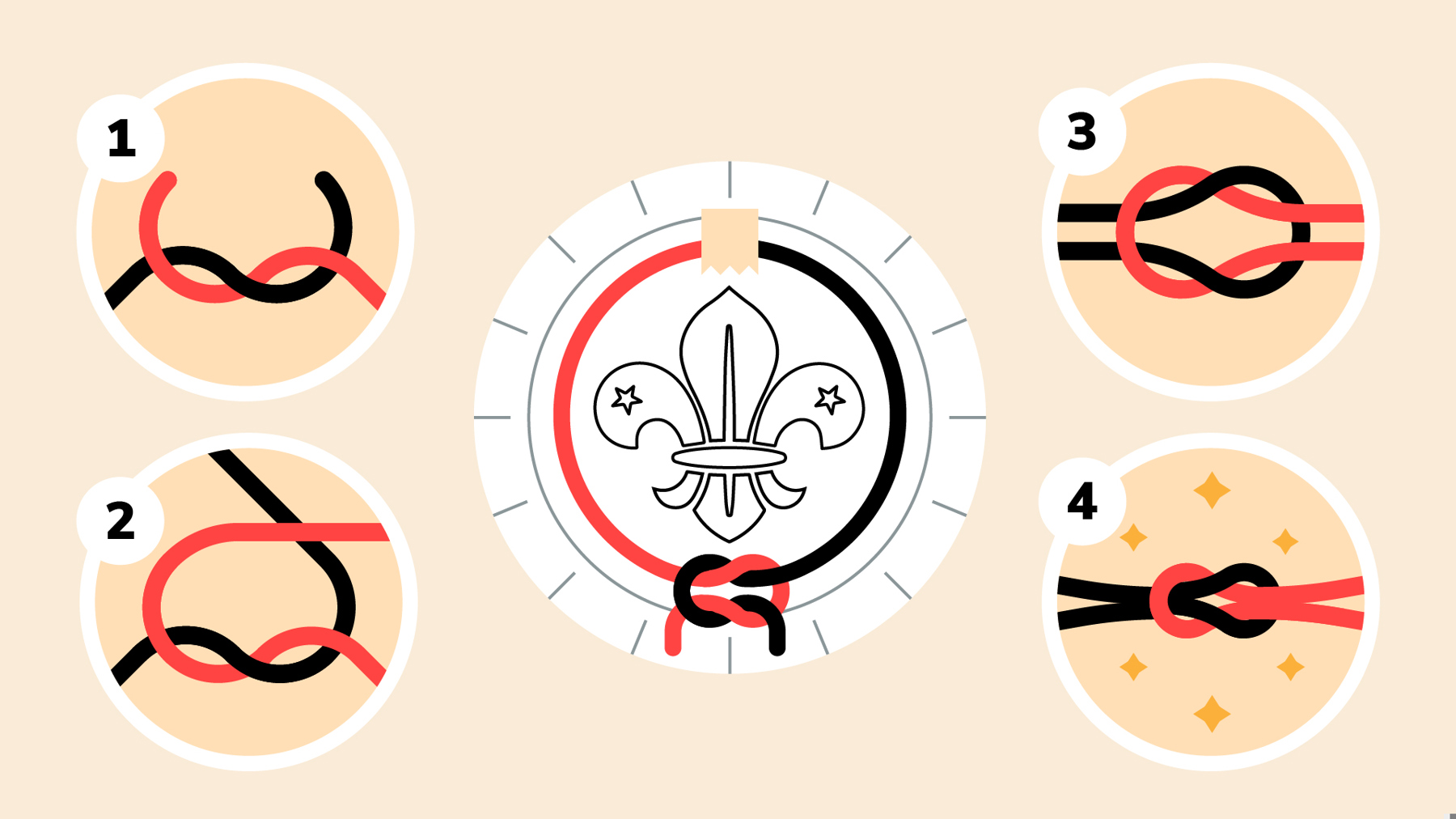
Try knot-tying with strawberry laces
You’ll need
- Edible poles, such as pretzel sticks, breadsticks or chocolate fingers
- Edible ropes, such as strawberry laces
Before you begin
- Use the safety checklist to help you plan and risk assess your activity. Additional help to carry out your risk assessment.
- Make sure all young people and adults involved in the activity know how to take part safely.
- Make sure you’ll have enough adult helpers. You may need some parents and carers to help if you’re short on helpers.
Setting up this activity
- Check for allergies, eating problems or dietary requirements and adjust the food items used as needed. This may include making sure there’s no cross-contamination during the storage, preparation, cooking and serving. If you’re unsure, check with the young person and their parents or carers.
- Be conscious about who may be fasting when running a food-related activity – you may want to plan it for when everyone can get involved.
Running this activity
- Gather everyone together and ask if anyone can name any knots. Some people may say a reef knot (or square knot), a half hitch or a clove hitch.
- Tell everyone that you’re going practice some knots and lashings using your chosen food items.
- Ask everyone to wash their hands.
- Give out reuseable or paper plates and the food items that people need.
- Depending on people’s age, ability and knowledge, you may wish to demonstrate or talk through the knots.
- Let everyone get on with the knot tying and lashings. We’ve included instructions for a reef knot and diagonal lashing on this page. You can also use the attached document from Scout Adventures to try tying some more knots.
Learn to tie a reef knot

To make a reef knot:
A reef knot is a flat knot used for tying a scarf, a sling or bandage or a bundle of sticks together. It’s also known as a square knot. This knot is essentially the same knot twice, but in different directions each time.
- Take two strawberry laces. Place one to the left and one to the right.
- Lay the rope to your left on top of the rope to your right.
- Pass the left lace over the right lace and tuck it under, as you say ‘left over right and under’.
- Pass the right lace over the left lace and tuck it under, as you say ‘right over left and under’.
- When you’re ready, pull gently on all the ends to tighten.
- When everyone’s finished, check everyone’s knot or lashing.
- If it’s been tied correctly, it can be eaten – so tuck in!
Try this rhyme to help you remember how to tie it: left over right and under, right over left and under.
Learn to tie a diagonal lashing

To make a diagonal lashing:
- Start by winding the lace around both ‘poles’.
- Next, wind the lace back on itself.
- Wrap the lace diagonally across the poles in one direction with two or three turns.
- Then wrap the lace diagonally with two or three turns the other way.
- Finally, tie off the lashing with a gentle knot.
- When everyone’s finished, check everyone’s knot or lashing.
- If it’s been tied correctly, it can be eaten – so tuck in!
Reflection
This activity helped you to learn new skills by practising your knots and lashes. These can be hard to do at first, but practice makes perfect.
Did you try something new today? What did you learn about the importance of knots and lashings, and how different ones are used at different times? What happened if you over-tightened your edible knots?
This activity was also about how we can use materials in the outdoors to help us. If you needed to tie a knot when you were out in nature, what might you be able to use? Why is it important to focus on making your lashing neat and structurally correct?
Safety
All activities must be safely managed. You must complete a thorough risk assessment and take appropriate steps to reduce risk. Use the safety checklist to help you plan and risk assess your activity. Always get approval for the activity, and have suitable supervision and an InTouch process.
- Food
Remember to check for allergies, eating problems, fasting or dietary requirements and adjust the recipe as needed. Make sure you’ve suitable areas for storing and preparing food and avoid cross contamination of different foods. Take a look at our guidance on food safety and hygiene.
- To make this activity harder, challenge people to construct shapes or miniature projects from the edible materials.
- Check for allergies, eating problems or dietary requirements and adjust the food items used as needed. This may include making sure there’s no cross-contamination during the storage, preparation, cooking and serving. If you’re unsure, check with the young person and their parents or carers.
- If someone needs different food items, such as gluten free biscuits, you may want to buy these for the whole group.
- If you can’t find the items for a certain dietary requirement or allergy, everyone could use string instead, then be given a suitable snack afterwards to say well done.
- Some people may not like certain food textures or tastes and that’s OK. Try to find an alternative for them. No-one has to use all the ingredients or be made to try foods if they’re not happy, comfortable or don’t want to.
- If anyone needs help or struggles with fine motor skills, give them the opportunity to work in pairs or small groups. They could also work with a young leader or an adult volunteer. You could use larger ropes and poles, such as dowel and string, if working with miniature edible versions is fiddly for anyone.
All Scout activities should be inclusive and accessible.
Why not try some different knots or lashings? You could experiment with your own versions to see which is strongest or easiest to untie. Or, you could experiment with different food items and see which works best?




